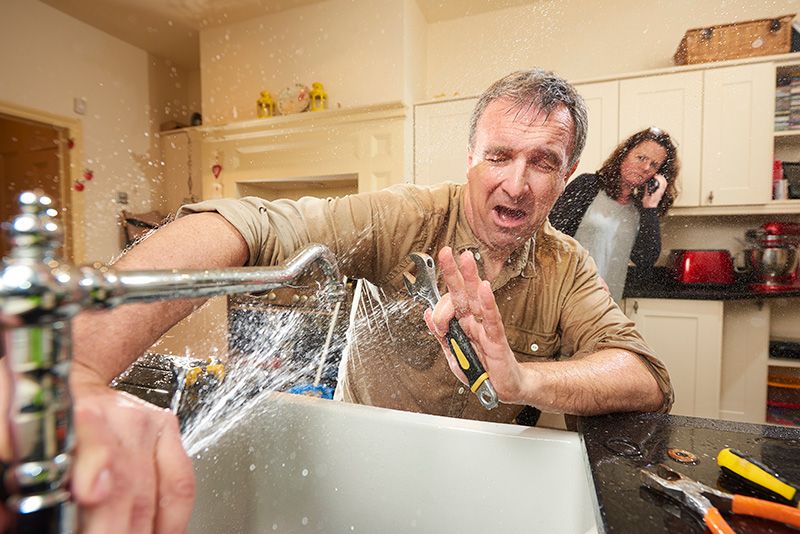- Not having the appropriate tools.
So, you have finally decided to tackle that plumbing job in your home, sure it can’t be that hard, can it? You’ve grabbed the trusty toolbox, inside are a set of grips, a bent screwdriver that has doubled as a chisel, an old rusty tape measure with half the numbers missing, and a blunt hacksaw.
These kinds of tools will not get you far and will most certainly hinder your chances of completing the job with ease.
Before you undertake any plumbing job be sure to check you have the correct tools for the job. Adjustable spanners, pump pliers, a descent screwdriver set, a tape measure, and a well-made hacksaw would be the bare minimum.
- Over-tightening plumbing fittings and pipe connections
Over-tightening plumbing fittings, whether plastic, brass, copper, or iron can cause serious problems. Over-tightening a plastic waste fitting can cause the nut to slip. Overtightening an iron thread can cause the fitting to split. Both scenarios will cause a leak and damage the pipe or fitting completely.
- Tightening an olive joint dry
There is just a saying “they don’t make them like they used to” well this is certainly true when it comes to plumbing olives. Depending on the supplier compression fittings come with copper or brass olives. Copper olives are softer than brass and can be over-squashed with ease.
To avoid over-tightening and that horrible screeching noise when tightening a compression joint, use a jointing compound on the olive. A pipe joint compound is a type of sealant or paste used to help create a watertight seal.
- Using a chemical drain cleaner as a first choice
The first thing most people do when their plughole is clogged is to head to the shop and pick up some chemical drain cleaner. Easy solution, Right? Wrong. It is much easier to remove and clean the trap, use a drain snake, draining cleaning tool, or plunger.
The Chemicals used in drain cleaners, especially the cheaper ranges, are highly toxic and bad for the environment. Because the chemicals used in drain cleaners are so strong, these cleaners can cause damage to your drainage system, corroding pipes, and fittings.
To clear a slow drain, sprinkle it with baking soda, then pour vinegar and leave the solution to sit for several hours. When you’re done flush it with hot water.
- Using inappropriate taping methods or wrapping a thread tape backward
PTFE thread tape must wrap clockwise around the thread joint for it to work properly. Many DIYers make the mistake of wrapping it anti-clockwise so the tape unwinds from the threads as they tighten the fitting. That defeats the whole purpose of using thread tape since it can’t seal if it isn’t embedded in the threads
One other common mistake is putting the PTFE tape on the thread of a compression fitting. This serves no purpose whatsoever and is the improper use of PTFE tape. Yes, the joint will still leak.
To seal a compression olive joint, use a plumbing joint compound or paste (not silicone of PTFE)
- Not using plastic pipe inserts with plastic plumbing or MDPE
What’s so special about pipe inserts anyway? Pipe inserts play an especially important role in providing extra support to plastic pipework minimising any loss of shape that can occur when cutting.
Pipe inserts maintain the structural shape of the pipework, providing a more effective seal between the outside of the diameter of the pipe and the O-ring. In turn, this helps to make the pipe more rigid when a fitting is applied.
- Not replacing the chemical inhibitor after draining a heating system
So, what is an inhibitor and why is it so important?
The central heating inhibitor is a chemical liquid used to protect your central heating system and keep it working efficiently and prolong its lifespan.
Over time, radiator sludge builds up in your central heating system. This thick black or brown gloop sits at the bottom of your pipes and radiators which stops the water from running through your system properly. Putting strain on your boiler and causing your radiators to not heat up efficiently.
The chemicals in the inhibitor break down the sludge in your central heating system and protect it from building up again.

